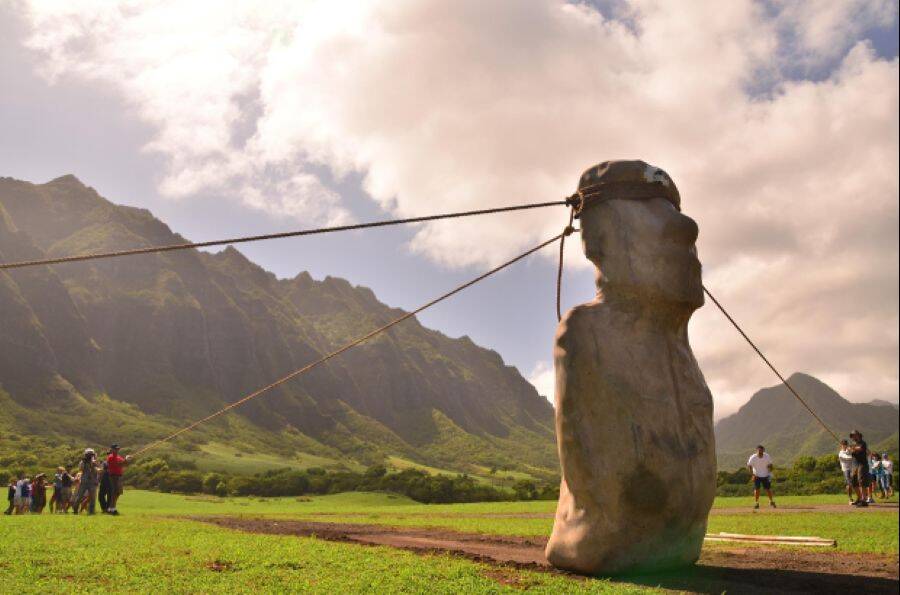Archaeologists Just Solved The Mystery Of How The Easter Island Statues Were Moved
Carl LipoResearchers used a four-ton replica to help answer the question of how the moai statues of Easter Island were moved.A recent study may have solved the mystery behind how the Indigenous people of Rapa Nui were able to move Easter Islands moai statues onto their ceremonial platforms. Archaeologists say the statues were walked into place by remarkably few people using ropes. The researchers used physics, 3D modeling, and even a life-sized replica to finally solve the decades-long mystery. How The Moai Statues Were Moved Across Easter IslandThe new study, published in the Journal of Archaeological Science, proposes that the people of Rapa Nui pulled off the impressive feat by moving the statues in a zig-zag motion. By studying 3D models, the researchers determined that the massive monoliths had wide, D-shaped bases and leaned forward slightly, which would have made it easier for the inhabitants of Easter Island to walk them to their platforms.The team tested this theory by creating a 4.35-ton replica. With just 18 people, they managed to move the statue more than 300 feet in 40 minutes.Carl LipoA diagram demonstrating how the statues were moved.Once you get it moving, it isnt hard at all people are pulling with one arm, study co-author Carl Lipo of Binghamton University said in a statement. It conserves energy, and it moves really quickly. The hard part is getting it rocking in the first place. The question is, if its really large, what would it take? Are the things that we saw experimentally consistent with what we would expect from a physics perspective?The physics makes sense, Lipo continued. What we saw experimentally actually works. And as it gets bigger, it still works. All the attributes that we see about moving gigantic ones only get more and more consistent the bigger and bigger they get, because it becomes the only way you could move it.Another key factor in the transportation of these statues was the roads they traveled on, which were roughly 15 feet wide and curved downward. This design helped to stabilize the statues as they were walked to their final destination. Every time theyre moving a statue, it looks like theyre making a road, said Lipo. The road is part of moving the statue.Still, not everyone is convinced about this latest study.Other Potential Explanations For The Easter Island HeadsResearchers previously believed that the moai statues, which were created between 1250 and 1500 C.E., were transported horizontally on wooden rollers. However, Lipo claims this latest theory is the only explanation as to how the Indigenous people of Rapa Nui were able to move the statues. Carl LipoA fallen statue on Easter Island.Find some evidence that shows it couldnt be walking. Because nothing weve seen anywhere disproves that, Lipo challenged. In fact, everything we ever see and ever thought of keeps strengthening the argument.According to Lipo, this new research not only provides physical evidence unlike previous theories but it also honors the engineering feat of the people of Easter Island.It shows that the Rapa Nui people were incredibly smart. They figured this out, Lipo said. Theyre doing it the way thats consistent with the resources they have. So it really gives honor to those people, saying, look at what they were able to achieve, and we have a lot to learn from them in these principles.After learning how Easter Islands moai statues were moved, go inside nine unsolved ancient mysteries. Then, look at 30 famous statues around the world.The post Archaeologists Just Solved The Mystery Of How The Easter Island Statues Were Moved appeared first on All That's Interesting.


